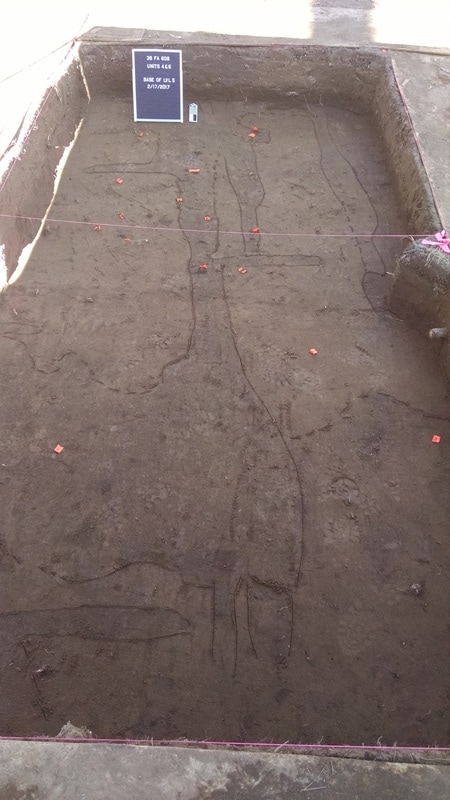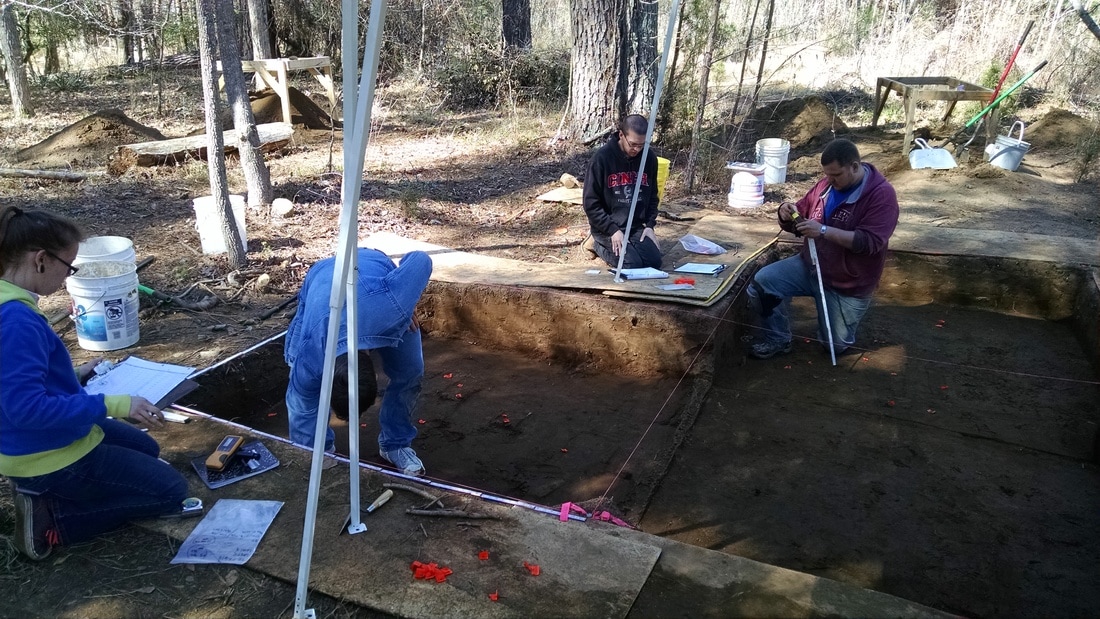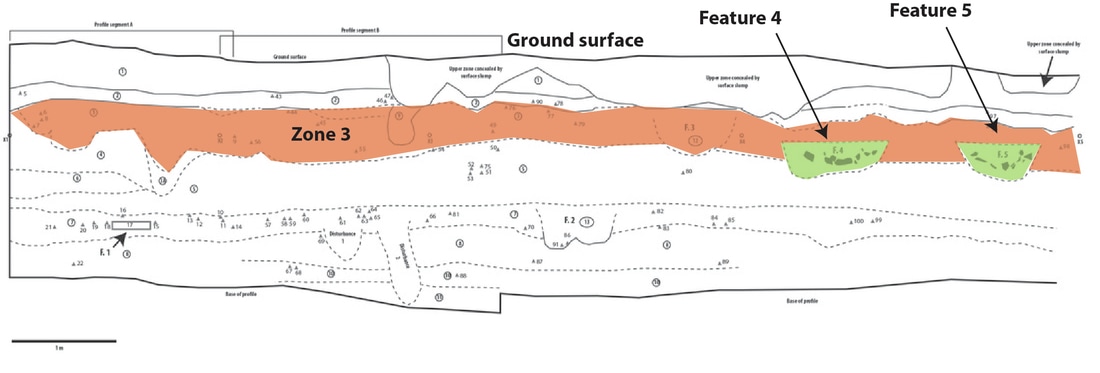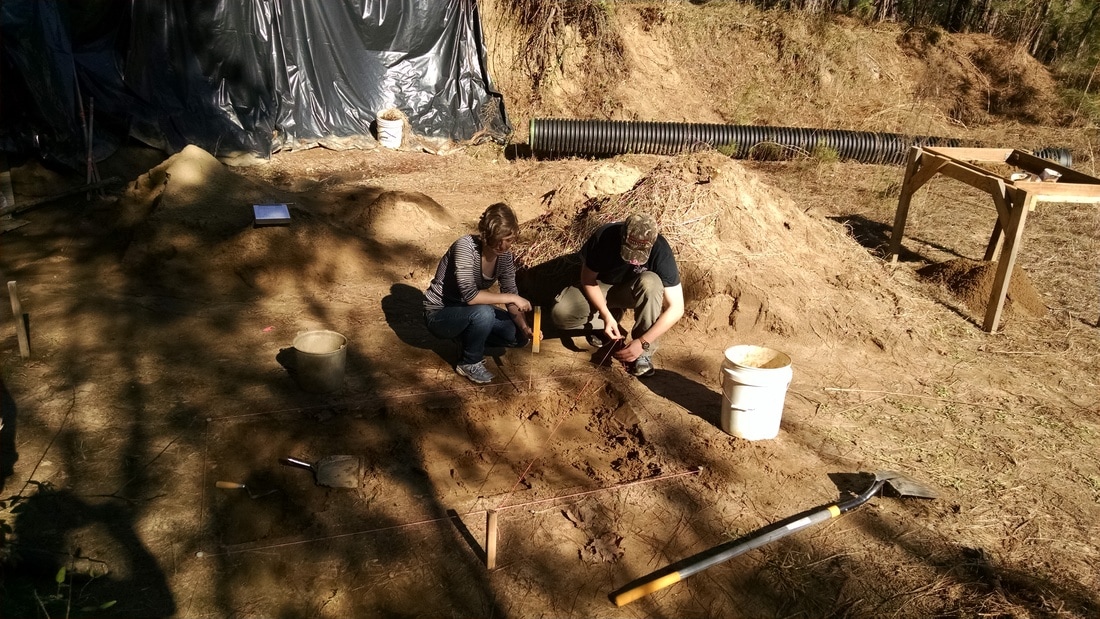This Friday, we finally got to the bottom of Zone 2 in two of the block units (Units 4 and 6). Lo and behold . . . plow scars. So it looks like Zone 2 has been plowed after all.
We're removing the last remnants of Zone 2 with a shallow level (Level 6, about 5 cm in depth) intended to get rid of the plowscars and level the units off at an even 75 cm below datum. As of the end of the day on Friday, Level 6 was in progress in Units 4 and 6. Unit 5 was finishing up the last of their Zone 2 level (Level 4 in that unit).
Meanwhile, in the "downstairs" portion of the site, we finally opened Unit 7 (Jim Legg could not join us, so work on Unit 9 was paused). Unit 7 is a 1m x 2m unit placed to investigate what, if anything, is beneath the deposits exposed in the machine cut. While the short answer, so far, is "not much," the deep sediments are not sterile: there was at least one piece of fire-cracked rock in the second level of Unit 7. I'm not anticipating we'll run into a heavy prehistoric deposit, but at this point we don't have any data about what's down there other than a single exploration I did with a 3" bucket auger. A few more levels in Unit 7 have the potential to tell us quite a bit, as even a relatively sparse occupation will probably be detectable in levels from a 1m x 2m unit.






 RSS Feed
RSS Feed
